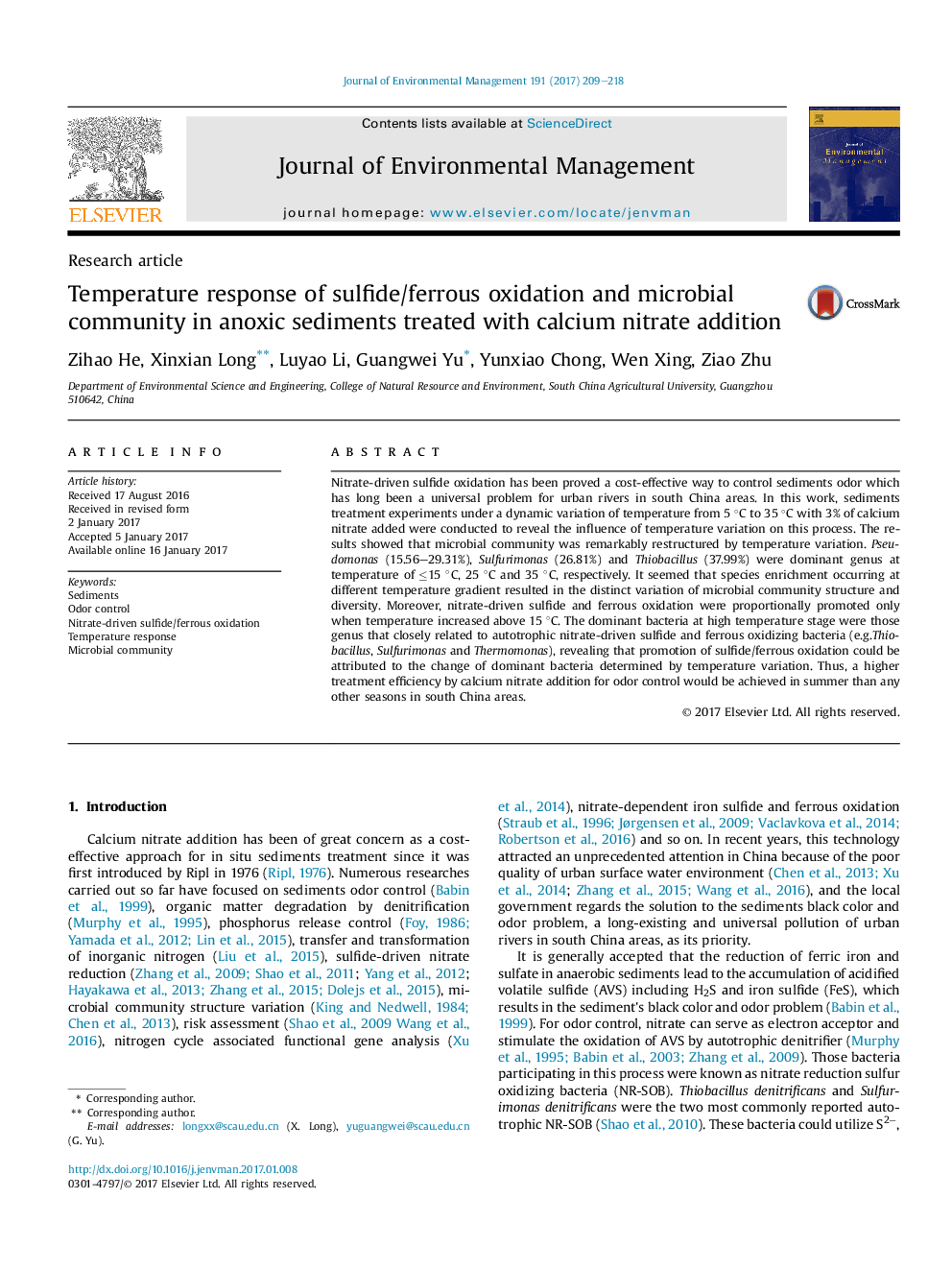| Article ID | Journal | Published Year | Pages | File Type |
|---|---|---|---|---|
| 5116788 | Journal of Environmental Management | 2017 | 10 Pages |
•Mechanism of how temperature variation affects sulfide/ferrous oxidation was study.•S/Fe oxidation associated bacteria were remarkably restructured by temperature.•Variation of S/Fe oxidation could attributed to shift of dominant bacteria.•Higher odor control efficiency would be achieved in summer than other seasons.
Nitrate-driven sulfide oxidation has been proved a cost-effective way to control sediments odor which has long been a universal problem for urban rivers in south China areas. In this work, sediments treatment experiments under a dynamic variation of temperature from 5 °C to 35 °C with 3% of calcium nitrate added were conducted to reveal the influence of temperature variation on this process. The results showed that microbial community was remarkably restructured by temperature variation. Pseudomonas (15.56–29.31%), Sulfurimonas (26.81%) and Thiobacillus (37.99%) were dominant genus at temperature of ≤15 °C, 25 °C and 35 °C, respectively. It seemed that species enrichment occurring at different temperature gradient resulted in the distinct variation of microbial community structure and diversity. Moreover, nitrate-driven sulfide and ferrous oxidation were proportionally promoted only when temperature increased above 15 °C. The dominant bacteria at high temperature stage were those genus that closely related to autotrophic nitrate-driven sulfide and ferrous oxidizing bacteria (e.g.Thiobacillus, Sulfurimonas and Thermomonas), revealing that promotion of sulfide/ferrous oxidation could be attributed to the change of dominant bacteria determined by temperature variation. Thus, a higher treatment efficiency by calcium nitrate addition for odor control would be achieved in summer than any other seasons in south China areas.
